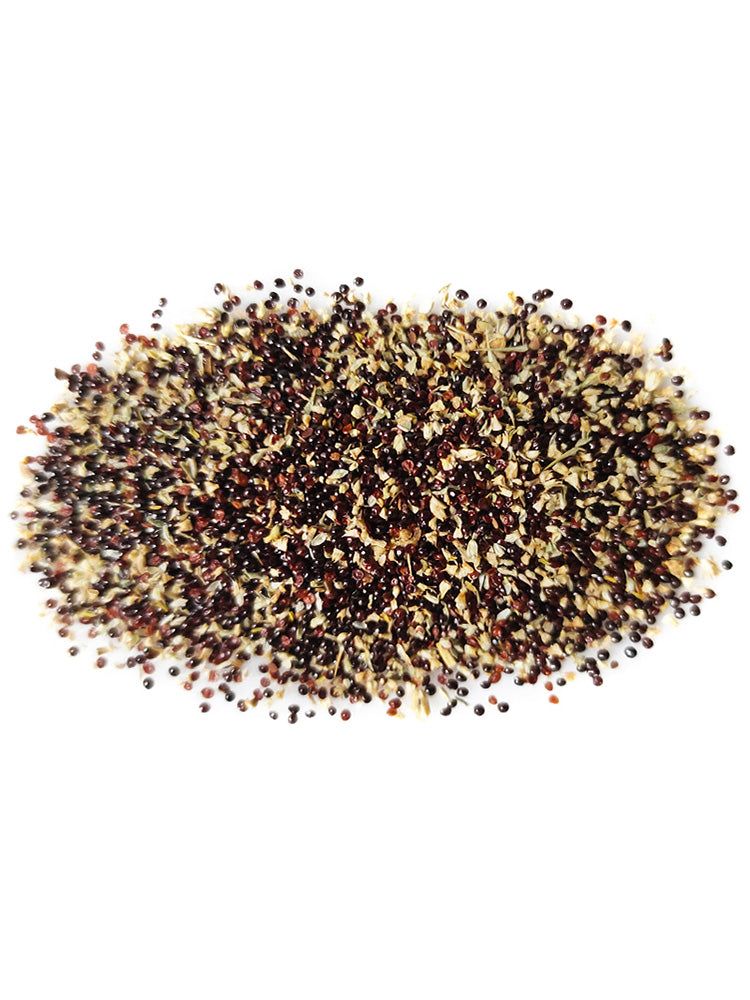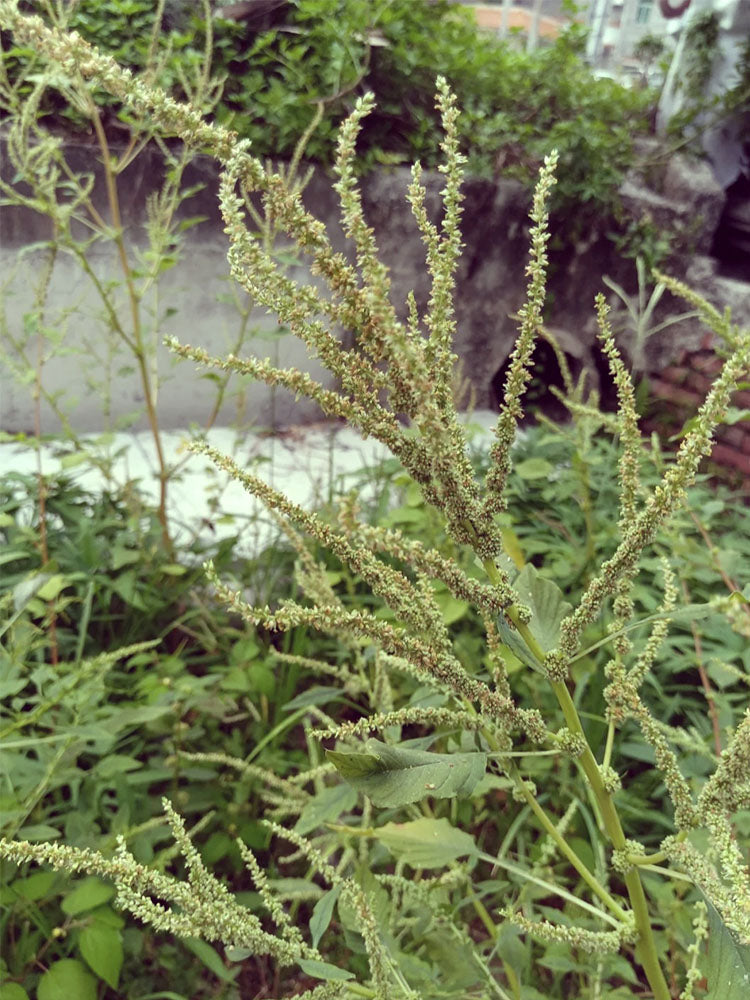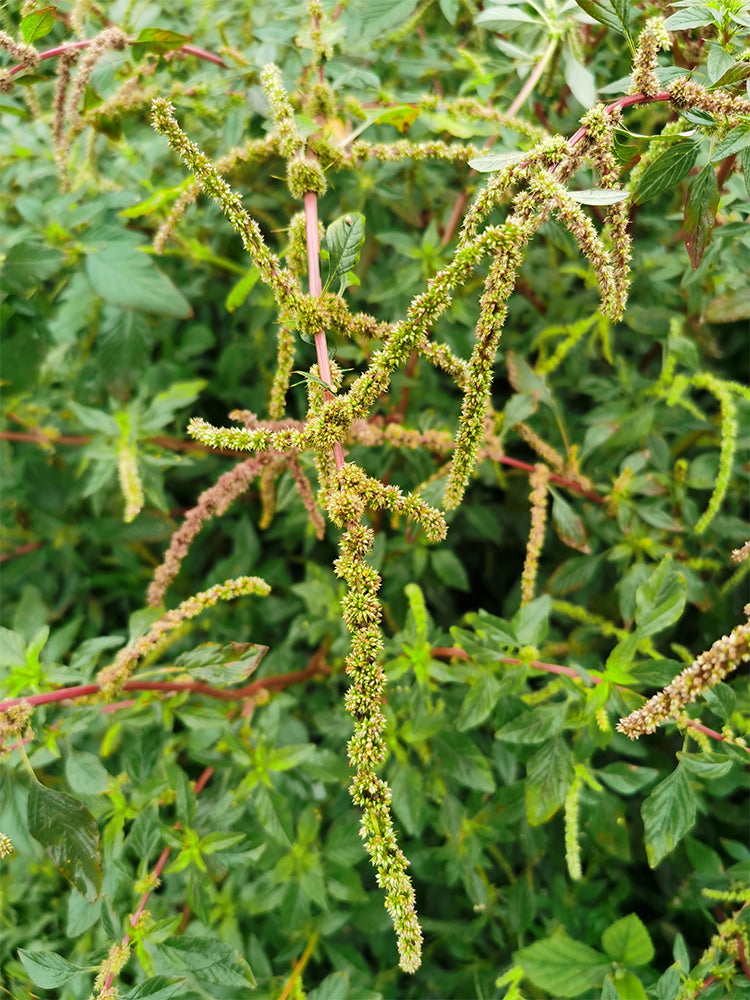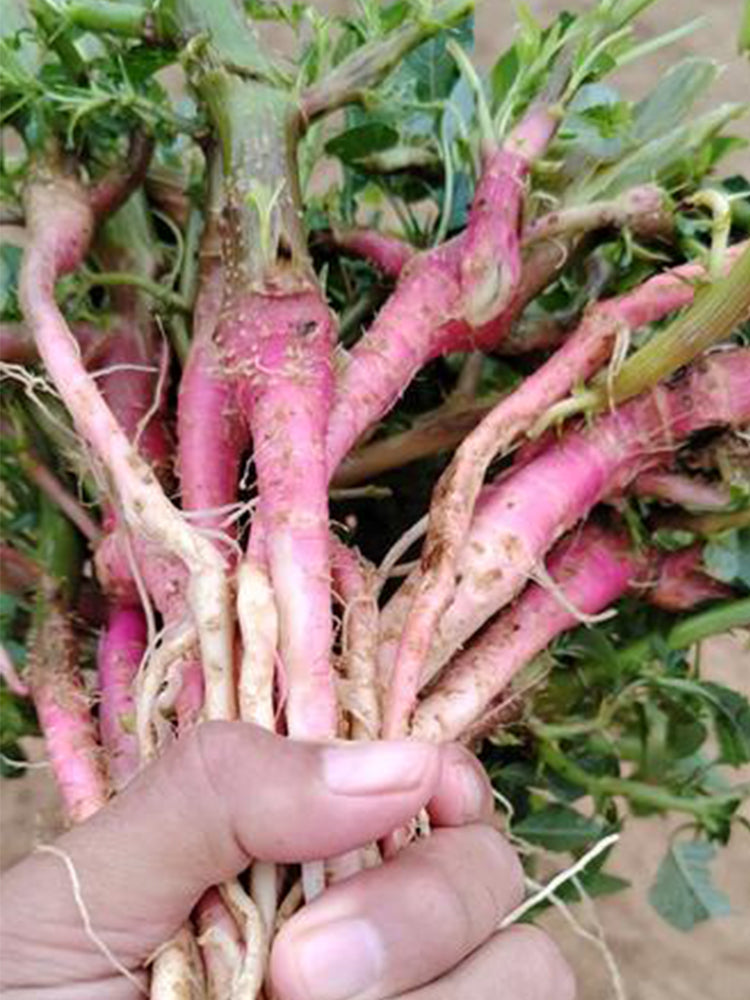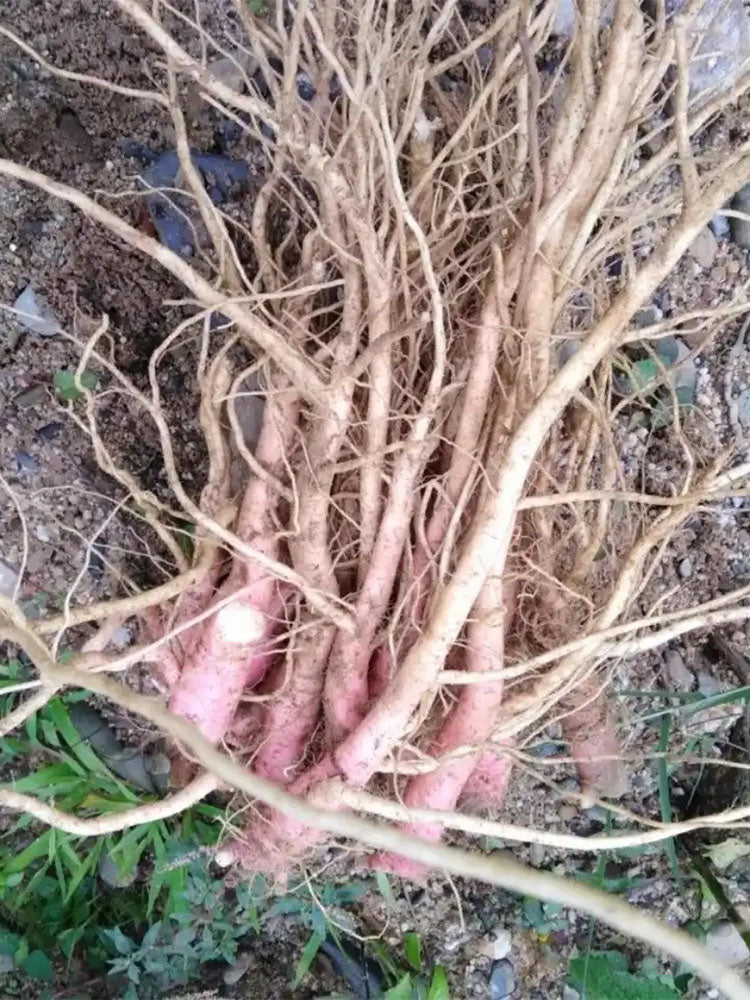BELLFARM
Spiny Amaranth (Amaranthus spinosus)
Sale
Sold out
Regular price
$2.99 USD
Regular price
$4.99 USD
Sale price
$2.99 USD
Unit price
per
Couldn't load pickup availability
-
5-14 Days delivery.
-
Ship out within 24 hours.
Species Characteristics:
- Spiny Amaranth (Amaranthus spinosus) is an annual herbaceous plant of the genus Amaranthus (family Amaranthaceae), characterized by an erect, multi-branched stem with longitudinal stripes and rhombic-ovate to ovate-lanceolate leaves with obtuse tips. Its panicles are axillary and terminal, measuring 3–25 cm in length, with flowering and fruiting occurring from July to November. The seeds are nearly spherical and black or brownish-black in color. This species typically grows in open areas or cultivated fields at altitudes of 300–800 meters, demonstrating high adaptability. Widely used in traditional Chinese medicine, it exhibits properties of clearing heat, detoxifying, promoting blood circulation, and reducing swelling. The young stems and leaves are also edible as a wild vegetable, particularly during the seedling stage, being rich in nutrients. For culinary use, they should be blanched and then prepared by stir-frying, cold dressing, or boiling in soups. Caution is required due to sharp thorns at the stem base, which must be carefully removed during harvesting and cooking to ensure safe consumption.
- Spiny Amaranth (Amaranthus spinosus) is an annual herbaceous plant of the genus Amaranthus (family Amaranthaceae), characterized by an erect, multi-branched stem with longitudinal stripes and rhombic-ovate to ovate-lanceolate leaves with obtuse tips. Its panicles are axillary and terminal, measuring 3–25 cm in length, with flowering and fruiting occurring from July to November. The seeds are nearly spherical and black or brownish-black in color. This species typically grows in open areas or cultivated fields at altitudes of 300–800 meters, demonstrating high adaptability. Widely used in traditional Chinese medicine, it exhibits properties of clearing heat, detoxifying, promoting blood circulation, and reducing swelling. The young stems and leaves are also edible as a wild vegetable, particularly during the seedling stage, being rich in nutrients. For culinary use, they should be blanched and then prepared by stir-frying, cold dressing, or boiling in soups. Caution is required due to sharp thorns at the stem base, which must be carefully removed during harvesting and cooking to ensure safe consumption.


